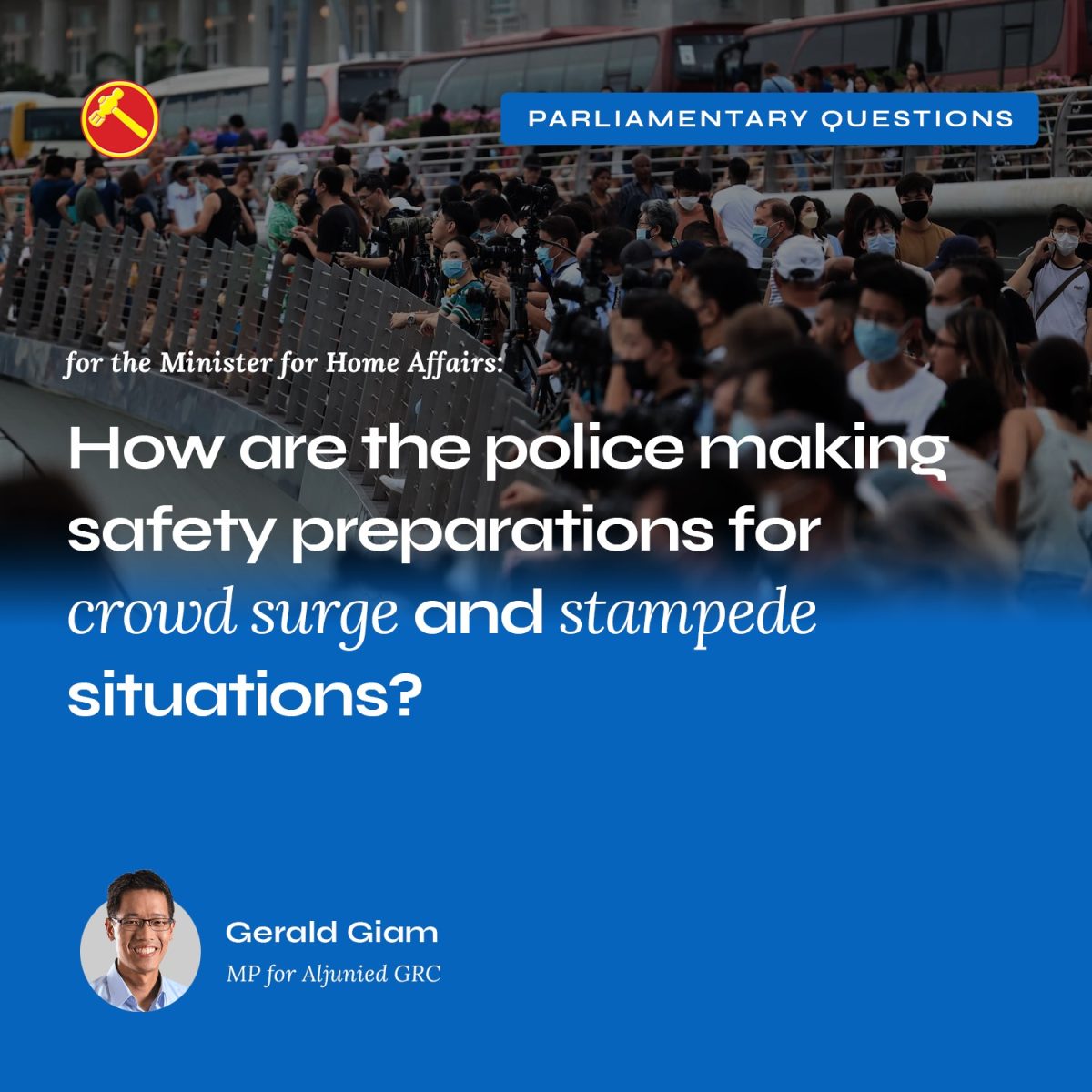I asked the Minister for Home Affairs last November whether the Ministry has identified a list of locations or events in Singapore at risk of crowd surge and stampede situations and what are the enhanced safety steps that organisers at these locations or events are required to put in place. I also asked the Minister whether the Singapore Police Force (SPF) proactively informs the public of crowd surge risks and ways to stay safe when participating in large public events. What prompted my questions was the tragic crowd crush in Itaewon district in Seoul on 29 Oct 2022, which killed 156 people.
Minister of State (MOS) for Home Affairs Sun Xueling answered these questions on 28 Nov 2022. She said that SPF works with relevant stakeholders to put in place measures to mitigate the risks associated with large crowds and put in place crowd management plans for major events such as New Year countdowns. Contingency plans are also in place. Her full reply can be found on the Parliament Hansard.
I presume some of these measures and plans would have been in place for the Marina Bay Singapore Countdown 2023 two days ago. Yet there were still packed crowds in enclosed areas which “triggered stampede fears in Marina Bay” (according to an AsiaOne headline) after the countdown was over and people were leaving the area through Marina Bay Sands (MBS). One TikTok user, @annainasia, posted a video, commenting that MBS was “insanely crowded”. @vinnography also posted a video of throngs of people crowding a single escalator to exit MBS. However, another user, @carl78794, posted a video of the surface roads at One Marina Boulevard, where the crowd control measures in place appeared to be more effective. I note that the Police tweeted updates throughout the evening of places closed “due to large crowds” and advised the public to avoid those areas.
In the same November Parliamentary sitting, I also asked the Minister whether tear gas would ever be used in crowded, confined spaces to control crowds. I felt prompted to ask this after the tragic football stadium stampede in East Java, Indonesia on 1 Oct 2022. During that incident, police fired tear gas in the stadium in an attempt to control the crowds, triggering a stampede and causing people to suffocate, leaving more than 130 people dead.
MOS Sun replied that “the Police will only use riot control agents, which include tear gas, in very specific situations where there is a serious threat of harm to persons and property or the risk of significant public disorder” and that “another lesson that we have learnt from looking at incidents that happen overseas is that the actions that we take have to be proportionate and we have to be very careful in the way we handle such incidents.”
Finally, I asked MOS Sun what lessons the Ministry of Home Affairs has drawn from the recent tragedies in South Korea and Indonesia to ensure that such incidents do not occur in Singapore. Specifically, I asked if the Ministry would be obtaining and studying the detailed investigation reports from the respective governments. The detailed reports are not always made public but may sometimes be shared between governments. MOS Sun replied, “Definitely, the Police, the SCDF do regularly analyse incidents that happen in other parts of the world to see what lessons we can learn through these unfortunate incidents.”
#Parliament #WorkersParty #crowdcrush #crowdsurge
